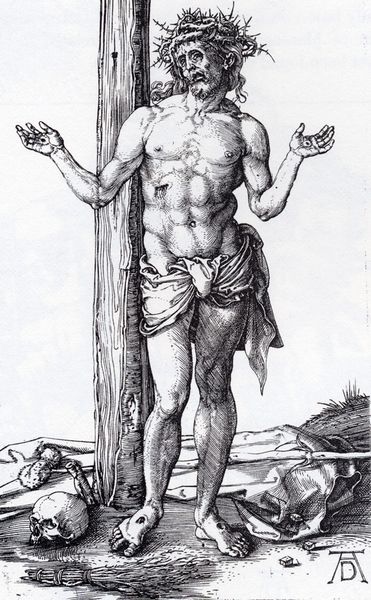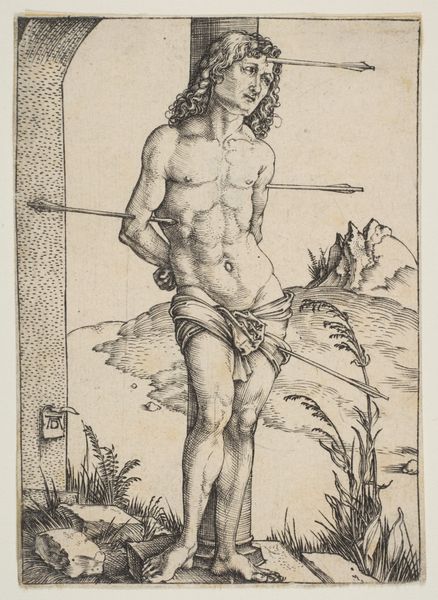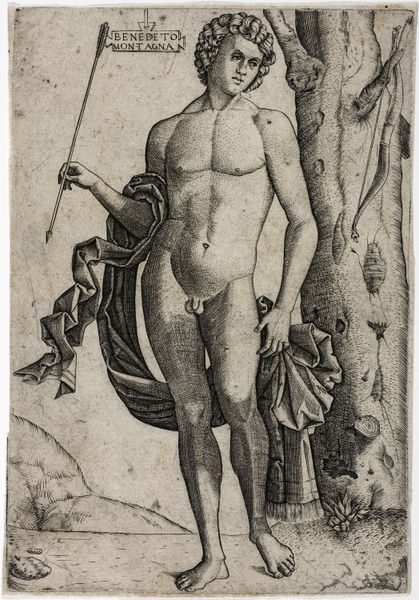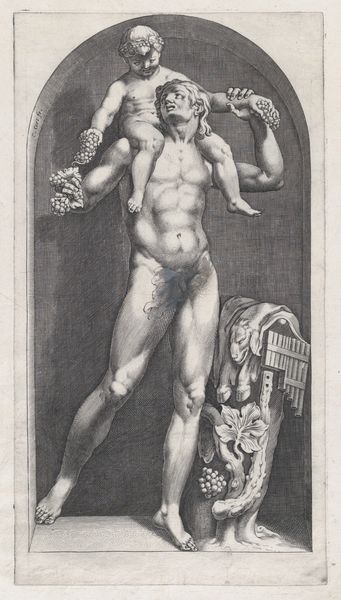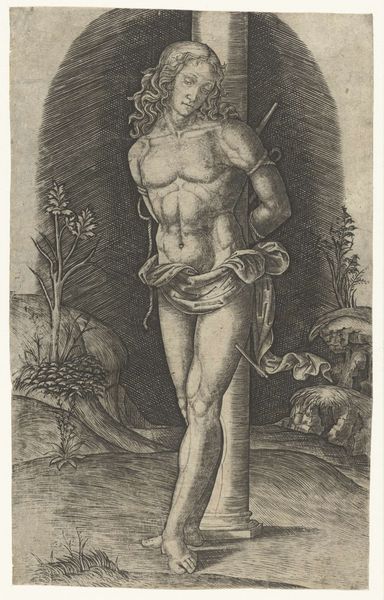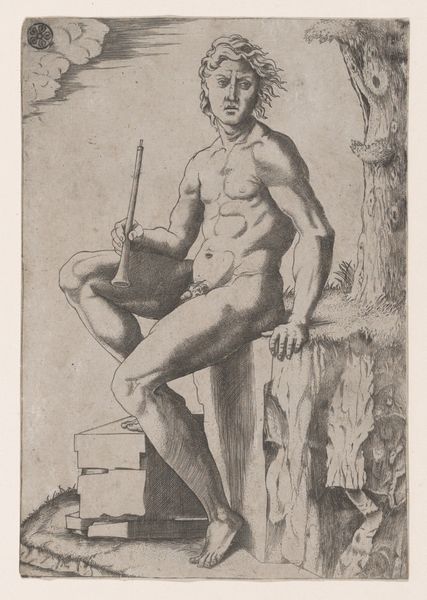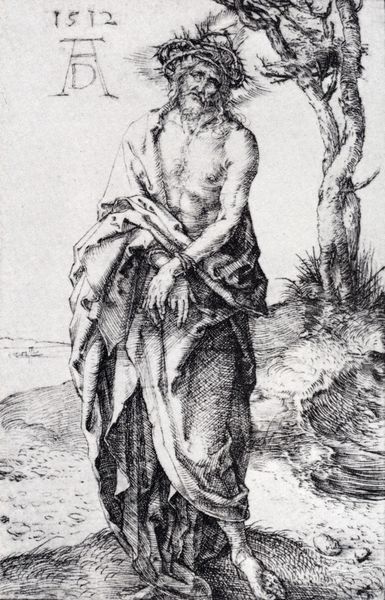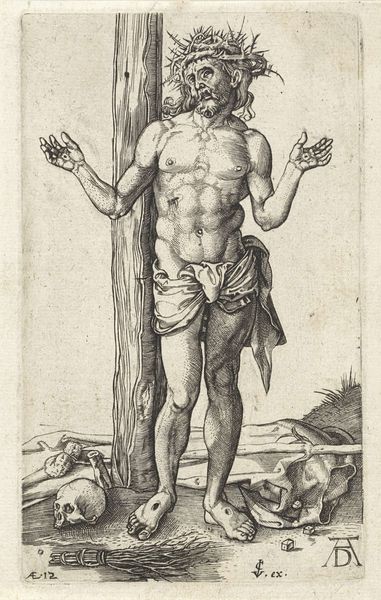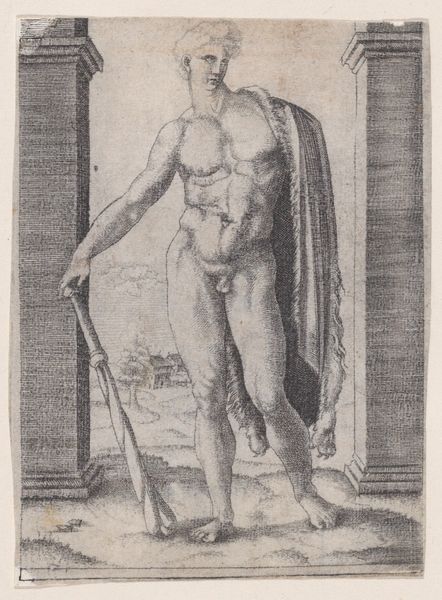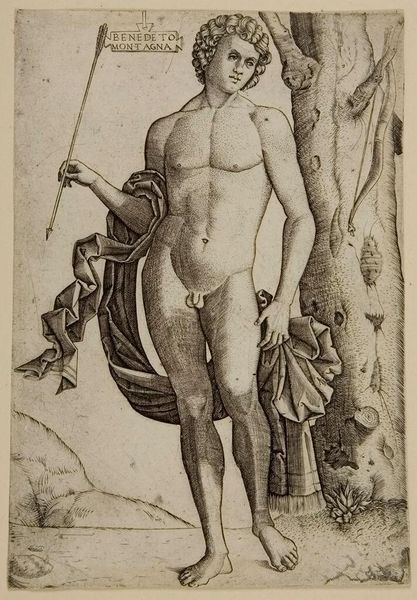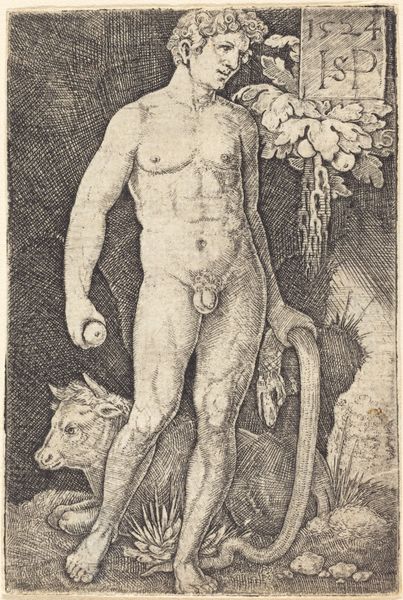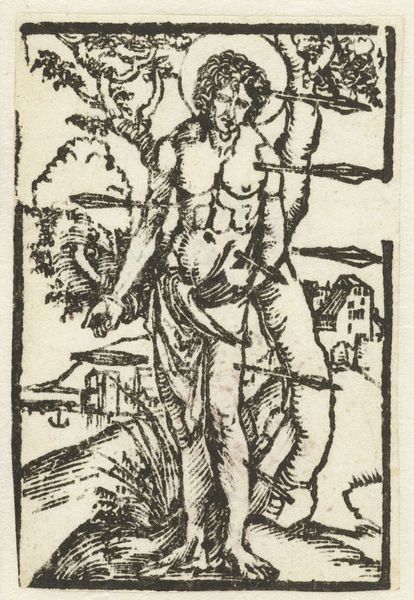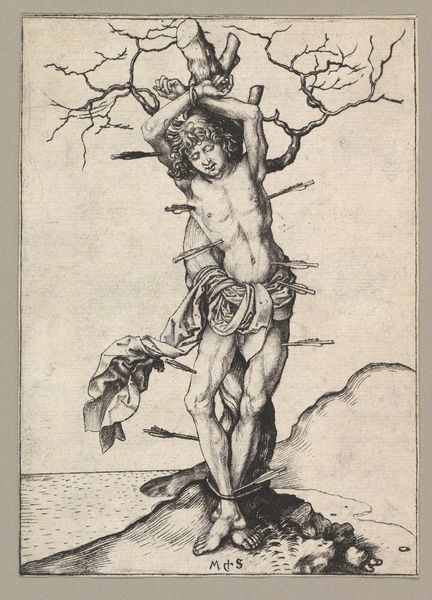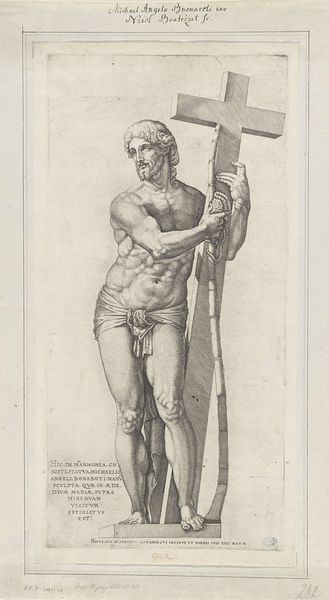
drawing
#
portrait
#
drawing
#
figuration
#
christianity
#
history-painting
#
northern-renaissance
#
italian-renaissance
Copyright: Public domain
Editor: So, here we have Albrecht Dürer's "St. Sebastian at the Column," a drawing from 1499. It strikes me as stark, almost unsettling with the starkness of the figure. What do you see in this piece? Curator: I see a fascinating interplay between vulnerability and strength. Dürer captures the saint’s suffering, of course – the arrows, the bound hands. But observe how serenely Sebastian gazes out, almost beyond the pain. Do you notice anything about the landscape surrounding him? It feels more...generic, almost, than the hyper-detailed rendering of his body. Editor: It’s like the landscape is secondary, a backdrop. Almost as if Durer wanted to portray something that existed beyond this singular instance of torture... Was he saying something more, I wonder? Curator: Precisely! The piece operates on multiple levels. It’s a devotional image, certainly, but also a display of Dürer’s mastery. The rendering of the musculature, the intricate details of the hair… it's pure Northern Renaissance skill. It's a way of immortalizing the martyr but also, if you think about it, immortalizing the *artist* and his rendering. He makes the sacred mundane, if you will, by making the torture of the saint a feat of man. Does the positioning of the arrow trouble you at all? Editor: Definitely in the head. Seems deliberately positioned for both dramatic and symbolic effect. Curator: Right you are. And remember, St. Sebastian was often invoked for protection against plagues. So in 1499, this image would've been powerfully relevant. Almost a call for salvation... perhaps in dark humor the 'arrows' of pestilence. And Dürer, with his keen eye, translates suffering into something exquisitely rendered, perhaps even a little beautiful in its morbid intensity, no? Editor: It makes me think about how art can transform even the darkest subjects, make us contemplate beauty within pain, horror, or the sublime. I came in viewing a historic, orthodox portrayal of saintly execution. Now, I see almost commentary on its artistic composition. It’s unsettling… and deeply human. Curator: Exactly! Art, at its best, is like a portal—revealing layer after layer, question after question. A visual paradox of life and history and the sacred within.
Comments
No comments
Be the first to comment and join the conversation on the ultimate creative platform.
